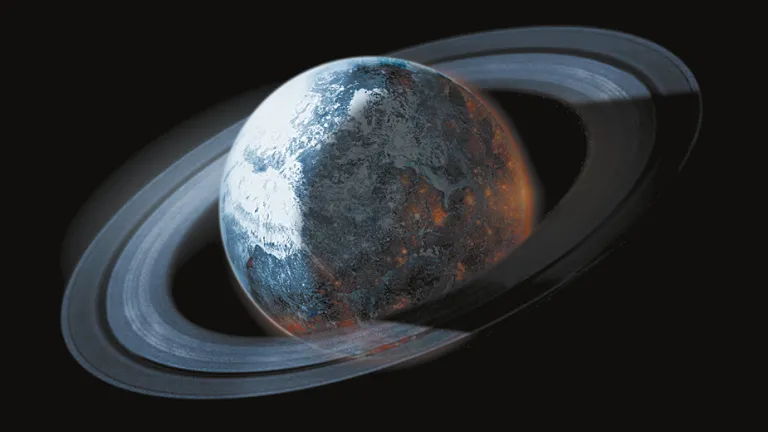God and Astronomy

Recent discoveries have taught us a great deal about the universe. How do these finding compare with what we find revealed in the Bible?
In the last century we have witnessed the greatest scientific discoveries regarding the vastness and functioning of the universe. From believing there were just a few thousand stars in the cosmos, now it is known there are billions of galaxies, each with billions of stars. According to a recent news release at the Sky & Telescope website, a team of astronomers has now upped the estimate of the number of galaxies to two trillion—“10 times as many galaxies as astronomers previously thought.”
Yet, what has been more amazing has been the discovery of how the laws of science appear to have been finely tuned to allow life and the universe itself to exist. This has led some scientists to admit all of this careful design could not be the result of chance but must have come from a superior Mind.
God’s connection to astronomy is simple: It is His handiwork, and we should be thankful and give recognition and praise to Him for it.
As the famous ex-atheist philosopher Antony Flew stated a few years before his death: “The leaders of science over the last hundred years, along with some of today’s most influential scientists, have built a philosophically compelling vision of a rational universe that sprang from a divine Mind. As it happens, this is the particular view of the world that I now find the soundest philosophical explanation of a multitude of phenomena encountered by scientists and laypeople alike” (There Is a God, 2007, p. 91).
Despite the mounting evidence for a Creator God, many people still don’t take Him into account. It’s like acknowledging a building and its parts, but not its architect.
How does God relate to astronomy? Let’s see some of the ways.
Explaining the beginning of the universe
If there is one discovery above all others that has puzzled astronomers, it is learning that the universe had a beginning and that it literally came out of nothing.
This was not expected at all at the beginning of the 20th century, since virtually all scientists thought the universe had always existed. Even the famous physicist Albert Einstein believed the universe did not have a beginning and later had to admit he made his biggest mistake when he added a constant to his theory of relativity to make it appear the universe was not expanding.
Yet, the Bible from the start affirmed the universe had a beginning. In the first verse it says, “In the beginning God created the heavens and the earth.” Here we have a statement that the universe had a beginning from nothing and that its cause is an all-powerful Creator.
Antony Flew admitted this discovery was one of the greatest evidences against atheism, saying: “If there had been no reason to think the universe had a beginning there would be no need to postulate something else that produced the whole thing. But the big-bang theory changed all that. If the universe had a beginning, it became entirely sensible, almost inevitable, to ask what produced this beginning.
“This radically altered the situation . . . Modern cosmologists seemed just as disturbed as atheists about the potential theological implications of their work. Consequently, they devised influential escape routes that sought to preserve the non-theist status quo. These routes included the idea of the multiverse, numerous universes generated by endless vacuum fluctuation events, and Stephen Hawking’s notion of a self-contained universe” (p. 137).
A beginning points to a Creator
Perhaps the noted astronomer Robert Jastrow best describes the dilemma scientists faced on discovering that the universe had a beginning and that this fact pointed to a Creator God. “A sound explanation may exist for the explosive birth of our Universe,” he asserts, “but if it does, science cannot find out what the explanation is. The scientist’s pursuit of the past ends in the moment of creation. This is an exceedingly strange development, unexpected by all but the theologians.
“They have always accepted the word of the Bible: ‘In the beginning God created heaven and earth.’ It is unexpected because science has had such extraordinary success in tracing the chain of cause and effect backward in time. Now we would like to pursue that inquiry farther back in time, but the barrier to further progress seems insurmountable.
“It is not a matter of another year, another decade of work, another measurement, or another theory; at this moment it seems as though science will never be able to raise the curtain on the mystery of creation.
“For the scientist who has lived by his faith in the power of reason, the story ends like a bad dream. He has scaled the mountains of ignorance; he is about to conquer the highest peak; as he pulls himself over the final rock, he is greeted by a band of theologians who have been sitting there for centuries” (God and the Astronomers, 1992, p. 107).
What holds the earth in its place?
Before our modern era, it no doubt seemed logical—since all objects on earth are sustained by something else upholding them—that the earth is also held up by a solid support. Thus, in India and China, religious beliefs included the idea that the earth was held up by a giant turtle. The Greeks believed the god Atlas supported the world on his shoulders. All ancient religions had something or someone holding up the earth—except the Bible.
Instead it says of God: “He stretches out his heavens over empty space. He hangs the earth on nothing whatsoever” (Job 26:7, God’s Word Version, emphasis added throughout). This seemed to defy logic, but it’s turned out to be true—our planet is held in its place and orbit by nothing that we can see!
It wasn’t until many centuries later that the invisible force that holds the earth in its place and orbit was correctly identified —gravity. Yet, how did the Bible get it right thousands of years before? The answer: Only through being inspired by the Creator God.
The roundness of the earth is even mentioned in the Bible, as it states: “It is He who sits above the circle of the earth, and its inhabitants are like grasshoppers, who stretches out the heavens like a curtain, and spreads them out like a tent to dwell in” (Isaiah 40:22).
The stars as a navigational tool and agricultural almanac
For millennia, explorers both on land and sea have been able to find their bearings by identifying the basic constellations in the sky. Also, farmers have used the pattern of the stars and constellations to know when to plant their seeds.
God Himself said He designed the positioning of the sun, the moon and the stars to allow human beings to determine the proper planting and harvesting seasons and to provide an orderly calendar.
He said in Genesis 1:14-15, “Let lights appear in the sky to separate day from night and to show the time when days, years, and religious festivals begin; they will shine in the sky to give light to the earth . . . and it was done” (Good News Bible).
The Hebrew translated “religious festivals” here is moedim. Literally meaning “appointed times,” this is the same word used in Leviticus 23:1: “Speak to the children of Israel, and say to them: ‘The feasts [moedim] of the Lord, which you shall proclaim to be holy convocations, these are My feasts [moedim].’” So God planned for there to be holy times to observe even before mankind was created!
Of all the places in the sky, there are two key constellations in particular one can use to find one’s bearings. In the northern hemisphere Polaris, the North Star, can be easily located during the entire year by finding the Big Dipper (part of the constellation Ursa Major), with the two outermost stars of the bowl opposite the handle pointing to Polaris. In the southern hemisphere, the Southern Cross is a bright constellation that points directly south.
Remarkably, the Bible mentions some of these same constellations in Job 9:7-9: “God alone stretched out the sky, stepped on the sea, and set the stars in place—the Big Dipper and Orion, the Pleiades and the stars in the southern sky. Of all the miracles God works, we cannot understand a one” (Contemporary English Version). His handiwork truly is awesome and beyond our limited human comprehension!
God could ask the same questions of today’s secular astronomers that He did Job and still get the same answer. He asked: “Can you arrange stars in groups such as Orion and the Pleiades? Do you control the stars or set in place the Big Dipper and the Little Dipper? Do you know the laws that govern the heavens, and can you make them rule the earth?” (Job 38:31-33, CEV). The answer is still the same—they are not even close to being in God’s league!
Where does this leave us?
God’s connection to astronomy is simple: It is His handiwork, and we should be thankful and give recognition and praise to Him for it.
As King David proclaimed in Psalm 19:1-4 (CEV): “The heavens keep telling the wonders of God, and the skies declare what he has done. Each day informs the following day; each night announces to the next. They don’t speak a word, and there is never the sound of a voice. Yet their message reaches all the earth, and it travels around the world.”







